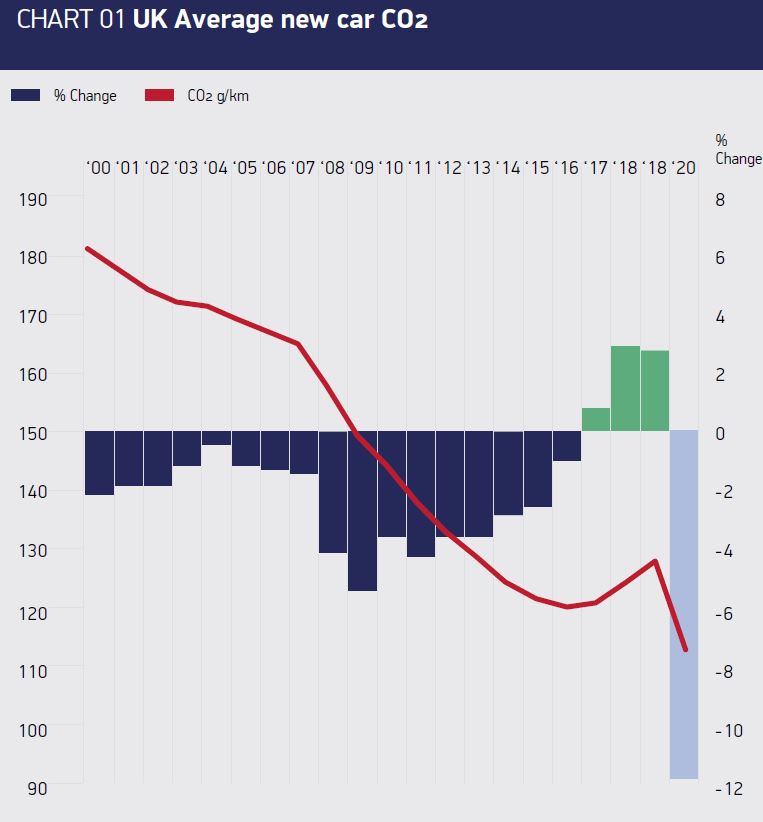New car CO2
New car average CO2 showed a marked decrease of -11.8% over 2019 figures as the EU industry faced the combined challenge of new more stringent targets in 2020, the disruption to development, production and sales caused by the pandemic, and the final transition from the New European Driving Cycle (NEDC) to Worldwide Harmonised Light Vehicle Test Procedure (WLTP) for CO2 measurement.
The EU target of 95g/km was set against the NEDC test and the introduction of the more representative WLTP has resulted in an uplift in measured CO2 of between 20% and 40% for the majority of models. The change from NEDC to WLTP has been very positive for consumers who can now better understand their vehicle’s fuel efficiency and CO2 performance.
Air Quality
Behavioural changes resulting from the Covid-19 pandemic led to traffic volume reductions of between 50 and 70%⁸ in 2020, and an average reduction in NOx concentration of about -40%⁹ was observed after weather effects had been taken into account. The most drastic changes in concentrations were observed in urban areas. Particulate matter (PM) concentrations recorded the highest level in Spring 2020 while lockdown measures were in place, mainly due to meteorological conditions.
The reduction of traffic as a result of ”stay at home” policies and reduced economic activity has led to an improvement in air quality. However, the adverse economic and social impacts of the restrictions put in place to limit the spread of the virus have been severe. The challenge for both central and local government remains to maintain the improvement in air quality while achieving and sustaining economic growth.









